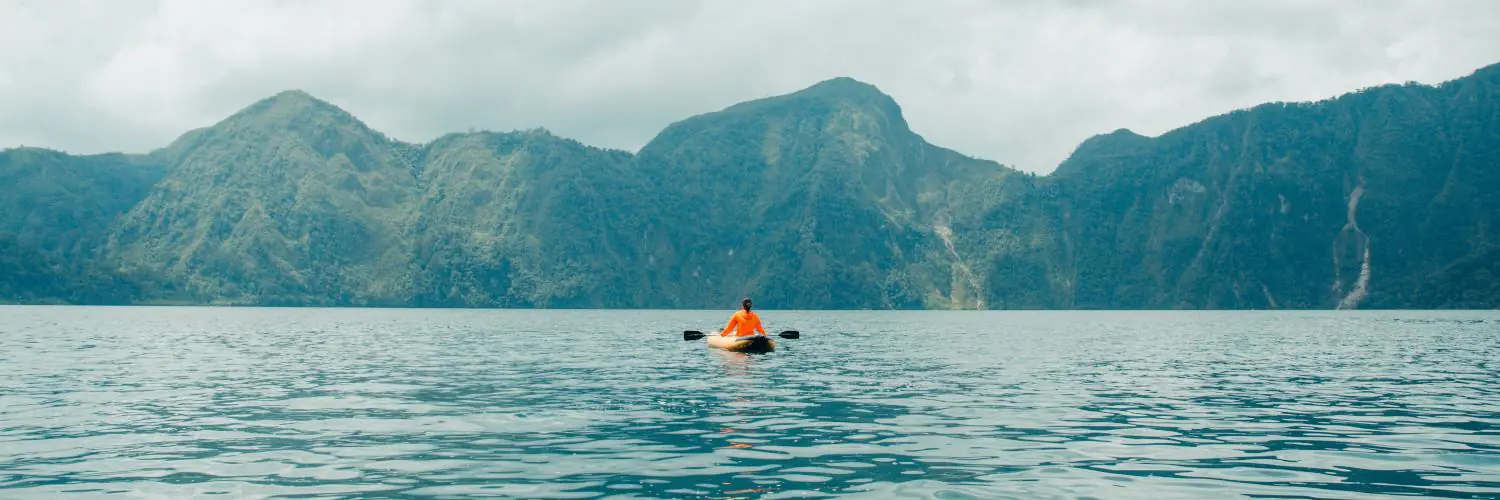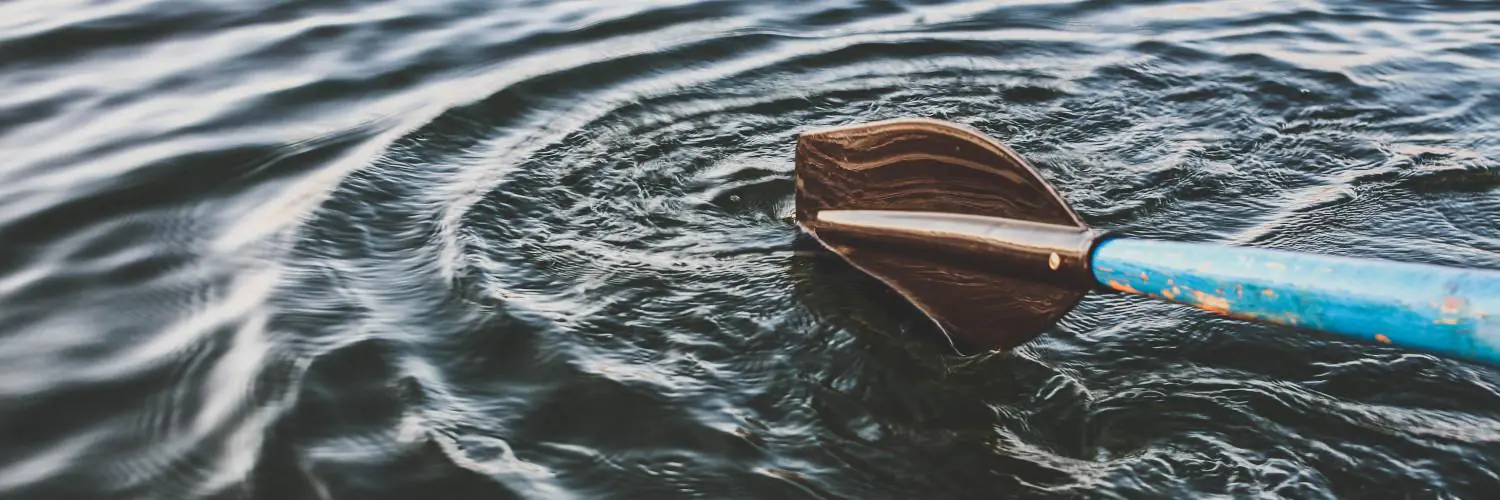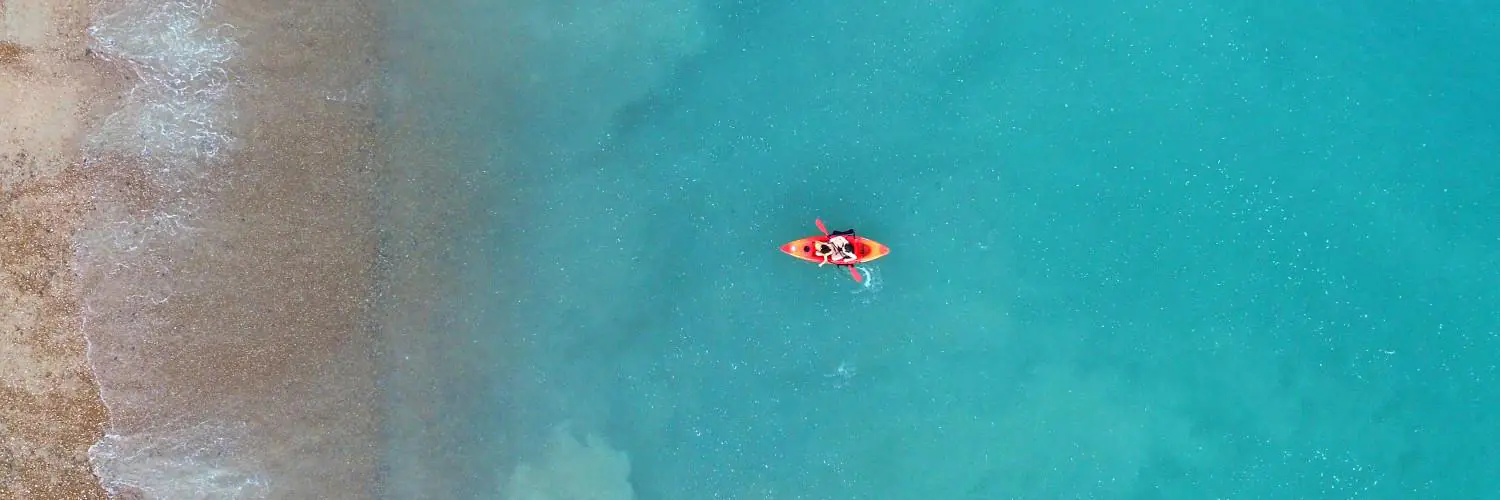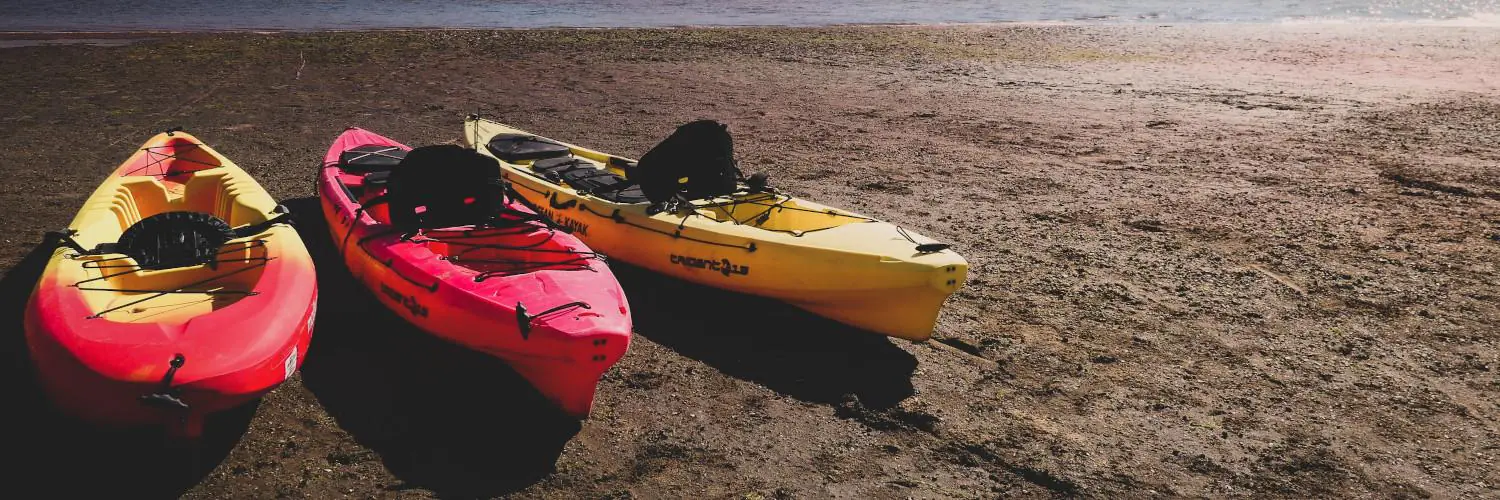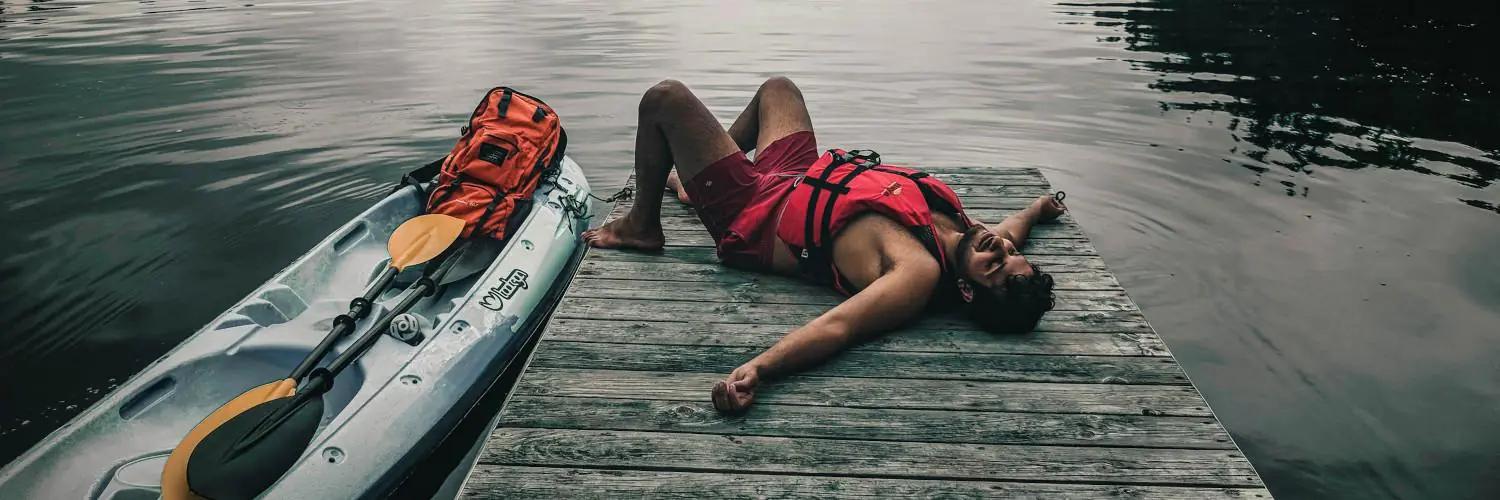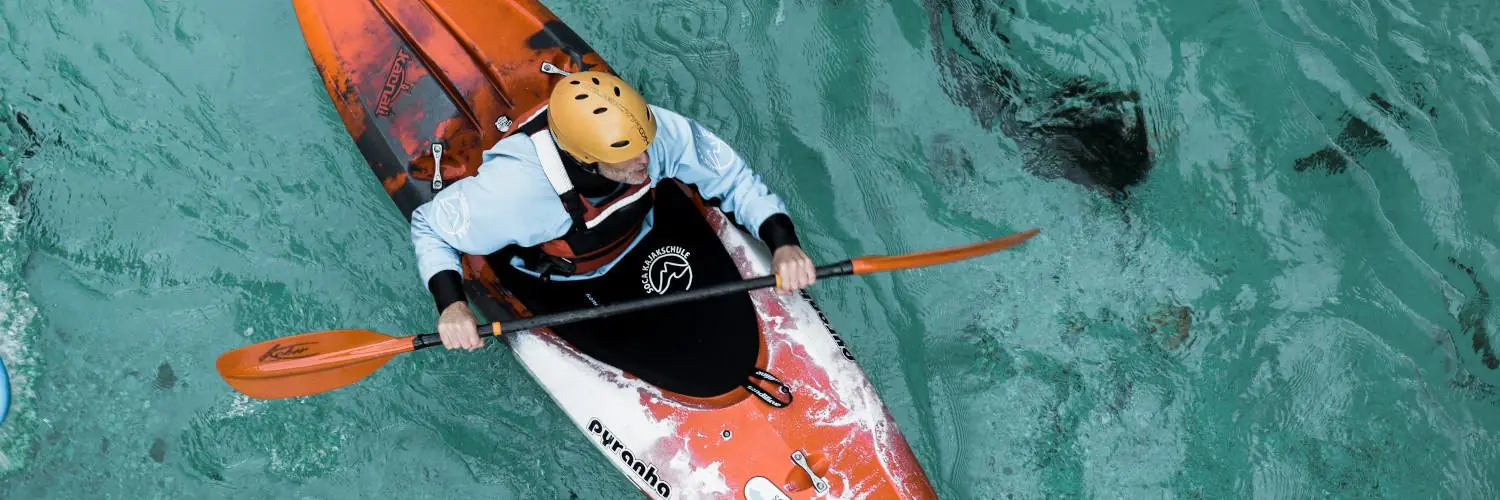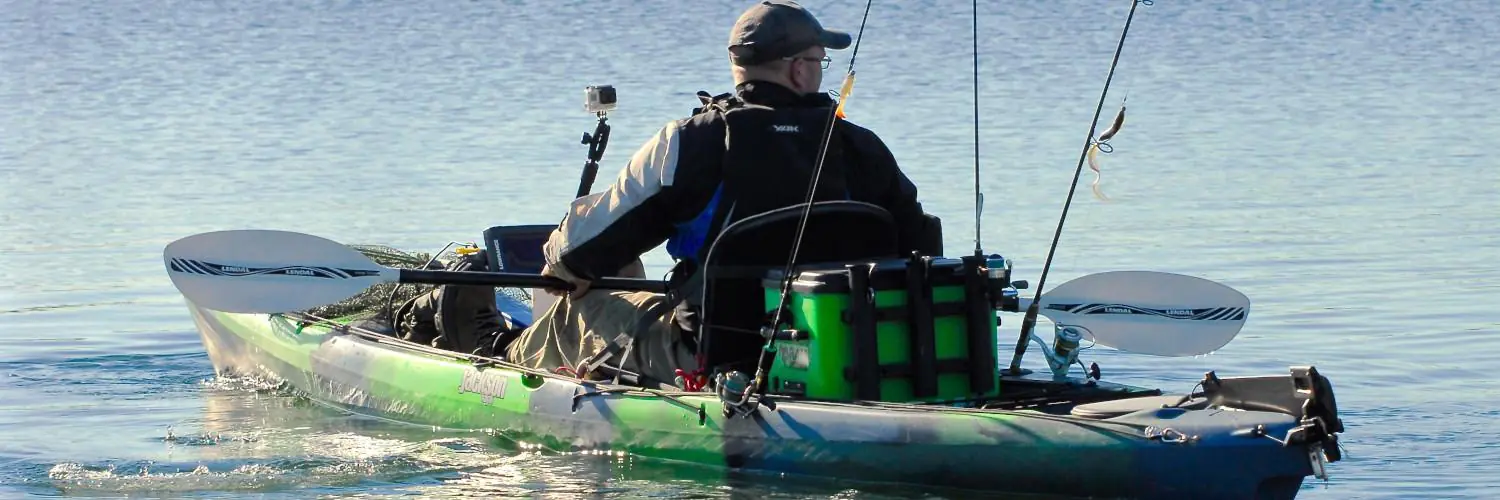Greenland presents a unique fusion of breathtaking nature and rich cultural history that manifests vividly in the traditional art of kayaking. The kayak, originally developed by the indigenous Inuit peoples, is not only a testament to human ingenuity but also a symbol of survival and tradition in the harsh Arctic environment. These slender, agile vessels were instrumental in the daily lives of the Inuit, crafted for hunting and transportation across the icy waters. Today, kayaking in Greenland offers adventurers the chance to connect with this ancient culture while navigating the serene and rugged coastlines.
Kayaking expeditions in Greenland cater to a variety of skill levels, attracting those who seek moderate adventures as well as seasoned explorers. The waters around Greenland are dotted with immense icebergs and frequented by an array of wildlife, including seals, whales, and a diversity of birds. Paddling in the shadow of Greenland’s towering ice formations allows for an intimate encounter with nature, inviting kayakers to navigate through a landscape that remains largely untamed by modern civilization.
Greenland’s kayaking routes highlight the juxtaposition of enduring Inuit traditions and the raw power of the Arctic. Expeditions can range from day trips in the south near Narsaq to more extensive voyages along the east coast. Each journey is an opportunity to witness the majestic beauty of the environment and to reflect on the remarkable history that shapes the identity of Greenland. These experiences underscore the importance of preserving both the natural ecosystem and the cultural heritage that kayaking embodies in this vast and vibrant land.
Table of Contents
History of Kayaking in Greenland
The kayak was integral to Inuit culture and survival, evolving over time to meet the demands of the harsh Arctic environment.
Inuit Kayak Origins
The kayak emerged as a pivotal innovation of the Inuit people, designed primarily for hunting. It is a testament to their ingenuity and intimate understanding of their maritime environment. These vessels were crafted to be stealthy and maneuverable, allowing the Inuit to navigate icy waters and approach marine animals quietly for sustenance. The construction of the original kayaks was a meticulous process: they comprised a wooden frame covered in sealskin, making them both light and waterproof.
Evolution of the Greenland Kayak
Over centuries, the Greenland kayak has undergone a transformation from a survival tool to a symbol of cultural significance. As materials and technology progressed, the construction of kayaks shifted to incorporate more durable and readily available materials like fiberglass. However, traditional methods and styles remain respected and are often replicated using modern substances for those favoring a more authentic paddling experience. This blend of tradition and modernity illustrates Greenland’s dedication to preserving its kayaking heritage while embracing innovation.
Planning Your Greenland Kayaking Adventure
When one plans their Greenland kayaking adventure, it’s essential to consider the timing of the visit, the packing list, and the option of joining a guided trip for an enriching experience.
Best Time to Visit
Greenland’s summer months, from June to September, are ideal for kayaking due to the milder weather and extended daylight hours. This period also provides the opportunity to witness the breathtaking midnight sun. Travelers should book their trips well in advance to ensure availability and potentially more favorable rates.
- June to September: Optimal kayaking conditions
- Extended Daylight: Enjoy the midnight sun for navigation and sightseeing
What to Pack
In Greenland’s unpredictable climate, the right gear is crucial.
Essentials:
- Dry Suit: To stay warm in frigid waters
- Life Vest: Mandatory for safety
- Gloves and Paddle Shoes: For comfort and protection
Travelers must also remember to pack personal items suited for the Arctic environment, including sun protection and layers for warmth. Travel insurance is highly recommended for unforeseen incidents and peace of mind.
Personal Gear:
- Sunscreen and sunglasses: Mandatory even in cold conditions
- Layers: Wool or synthetic base layers, fleece, and waterproof outerwear
- Travel Insurance: Don’t leave without it
Choosing a Guided Kayaking Trip
A guided trip is advisable, especially for those new to the region or seeking local insights. Professional guidance enhances safety and the overall experience while navigating through icebergs and spotting Arctic wildlife. Tours vary from day excursions to multi-week expeditions.
- Safety: Guides ensure navigational and wildlife encounters are handled safely
- Local Knowledge: Guides can offer insights into Greenland’s culture and environment
Guided trips may also increase the chance of sighting the northern lights, as guides understand the patterns and best viewing spots. They typically include necessary equipment, easing the burden on your packing list.
Types of Kayaking Expeditions
Greenland’s diverse waters invite kayakers to explore its natural beauty through various types of expeditions, each offering a unique perspective of icebergs, glaciers, and the Arctic fjords.
Day Trips and Short Excursions
For those new to kayaking or limited on time, Day Trips and Short Excursions grant a glimpse into the pristine wilderness. These short journeys typically last a few hours and can provide encounters with Greenland’s dramatic ice formations along the coastline. These excursions often focus on specific highlights, such as paddling among glistening icebergs in a calm fjord or exploring the periphery of imposing glaciers.
Multi-Day and Overnight Expeditions
Multi-Day and Overnight Expeditions promise a comprehensive experience, allowing adventurers to traverse further into unspoiled territories. These extended tours range from a few days to weeks, deeply immersing participants in the Arctic seascape. Kayakers camp along remote shores or stay in local settlements, gaining opportunities to witness diverse wildlife and navigate among massive icebergs that calve from Greenland’s towering glaciers. These expeditions require thorough preparation and are typically led by experienced guides to ensure safety and maximize the chance of encountering the unique marine life of the Greenlandic waters.
Greenland’s Paddling Destinations
Greenland offers some of the most spellbinding paddling destinations in the world. From the intricate fjords of the south to the dramatic glacier fronts in the west and the remote eastern sea coasts, each region presents paddlers with unique vistas and experiences.
South Greenland Fjords
In South Greenland, kayakers can navigate through a labyrinth of fjords where the Viking ruins meet the sea. Paddlers are often surrounded by steep mountains, and the fertile shores occasionally boast colorful vegetation, a stark contrast to the typical Greenlandic landscape. The South Greenland Fjords are not only rich in history but also provide ample opportunities for wildlife encounters.
East Greenland Coast
The East Greenland Coast offers more remote and challenging experiences. This region is characterized by its accessibility to the Arctic waters and hosts the world’s largest fjord system, Scoresbysund. Paddling along the East Greenland Coast, adventurers can revel in the sights of colossal icebergs, a variety of bird species, and perhaps even spot whales and seals amidst the icy waters.
West Greenland Icefjords
West Greenland is renowned for its massive icefjords. The region’s paddling is centered around Ilulissat Icefjord, a UNESCO World Heritage Site, and home to the active Sermeq Kujalleq glacier. The West Greenland Icefjords provide a surreal kayaking backdrop with gigantic ice sculptures populating the seascape. Here, one can truly grasp the scale and beauty of Greenland’s ice phenomena.
Wildlife and Environment
Greenland’s kayaking routes offer an exceptional opportunity to witness the region’s diverse wildlife and breathtaking environments up close. Paddlers can expect to encounter a variety of marine life, observe unique bird species, and navigate through stunning Arctic landscapes.
Marine Life Encounters
While kayaking in the waters of Greenland, participants have a good chance of observing whales in their natural habitat. Multiple whale species, including the humpback whale, frequent these waters. Additionally, encounters with seals, such as the ubiquitous ringed seal, provide a unique glimpse into the marine biodiversity of the Arctic region.
Bird Watching Opportunities
The skies above Greenland are a theater for bird watching, with several species calling this wilderness home. Notable bird-watching opportunities may include native seabirds, which are often spotted during kayaking expeditions. Observing these birds in flight or while they rest along the cliffs can be an ornithologist’s highlight.
The Arctic Landscape
Greenland’s ice cap forms a significant part of the Arctic landscape and can be seen while navigating along the coast. The backdrop of glaciers and icebergs creates a surreal paddling experience through the wilderness. As kayakers traverse these icy waters, they witness the stark beauty and the sheer scale of Greenland’s natural ice architecture.
Safety and Navigation
Proper safety measures and skillful navigation are paramount when kayaking in Greenland’s pristine but potentially perilous waters. Paddlers must be prepared for the unique challenges posed by icebergs and ever-changing weather and sea conditions.
Navigating Among Icebergs
When navigating through Greenland’s icy waters, kayakers must maintain a safe distance from icebergs. The density of the ice can vary, and icebergs are prone to rolling, which can create strong waves capable of capsizing kayaks. It is essential to be vigilant and keep at least two iceberg lengths away to avoid being caught in the turmoil should an iceberg calve or overturn.
- Safety Distance:
- Minimum 2 iceberg lengths away
- Avoid areas with high iceberg density
- Navigation Accessories:
- GPS for accurate positioning
- Compass as a fail-safe
- Charts to plan safe routes
Weather and Sea Conditions
The sea conditions in Greenland can change rapidly and kayakers must stay informed on the latest weather forecasts. Wind, precipitation, and fog affect visibility and sea state. It’s crucial that one dresses appropriately for the cold water, with operators advising the use of a dry suit to guard against hypothermia. Kayakers should employ navigation accessories like a compass and GPS to ensure accurate positioning, especially when visibility is low in the ice-covered fjords.
- Monitoring Weather:
- Check forecasts before departure
- Be prepared for sudden changes
- Essential Gear:
- Dry suit for insulation against cold water
- Spray skirt to keep the kayak’s cockpit dry
- Paddle with the appropriate length and blade design for the kayaker’s strength and skill level
- Communication Devices:
- VHF radio for emergencies
- Satellite phone when out of VHF range
By adhering to these safety and navigation measures, kayakers can enjoy the majestic beauty of Greenland’s waters while minimizing risks.
Cultural Experiences and Local Interaction
Exploring Greenland by kayak offers travelers the opportunity to not only take in the country’s breathtaking landscapes but also immerse in its rich cultural tapestry, particularly through the historical Inuit settlements and unique Greenlandic culinary customs.
Visiting Historic Inuit Settlements
When kayaking around Greenland, one can visit various historic Inuit settlements. These are crucial in understanding the local culture, as they are often nestled in regions that have been occupied for thousands of years. Ilulissat, for instance, is home to the Ilulissat Icefjord, a UNESCO World Heritage Site, and provides insight into traditional Inuit ways of life. Tourists can engage with local guides to learn about the long-standing relationship between the Inuit people and kayaking, a practice deeply ingrained in their culture for hunting and transportation.
Historical museums, often located within these communities, display ancient kayaks and gear, showcasing the Inuit craftsmen’s ingenuity. An example is the Greenland National Museum in Nuuk, which hosts exhibits on both the Inuit and the Viking explorers who once inhabited the island. Visitors may observe authentic Inuit artifacts and gain knowledge on how these indigenous people have thrived in Greenland’s harsh climate.
Greenlandic Cuisine and Traditions
Greenlandic cuisine is another avenue to experience local culture. Traditional dishes are primarily based on what hunters can obtain from the sea and land. Classic ingredients include fish, shellfish, seal, whale, reindeer, and muskox. A typical local dish one might encounter is Suaasat, a hearty soup often made with seal, rice, onions, and potatoes, flavored with bay leaves.
Food Preparation Traditions:
- Drying and Smoking: To preserve the harsh winter’s catch, fish and meat are often dried or smoked.
- Fermentation: A unique method used by the Inuit, certain foods are fermented for later consumption, like the Greenlandic shark.
Visitors can sample these traditional foods in local villages, where they are often invited to dine with inhabitants in a communal setting, fostering a deeper connection with local customs. Greenlandic meals may conclude with mattak, whale skin with a strip of blubber inside, considered a delicacy and known for its rich, chewy texture.
In addition to dining, tourists might visit the old village churches which serve not only as places of worship but also as community gathering points reflecting the spiritual aspects of Greenlandic culture. These structures, often simple yet historically profound, add another dimension to the cultural immersion of a kayak adventure in Greenland.
Practical Information for Travelers
Planning a kayaking adventure in Greenland entails organizing suitable accommodations and understanding the transportation logistics. This section provides travelers with essential details to prepare for their trip.
Accommodation Options
Kayak Hostel: For travelers seeking a budget-friendly stay, kayak hostels offer a comfortable and social environment, often with shared facilities to keep costs low. They are specifically tailored for kayakers, providing ample storage for equipment and close proximity to launching sites.
Hotels and Guesthouses: Various hotels and guesthouses are available in Greenland, with prices ranging from moderate to premium. Travelers can expect standard amenities and services that cater to a range of preferences and budgets.
Camping: For those who prefer a closer experience with nature, several campsites are scattered across prime kayaking locations. They provide an authentic outdoor adventure, though the amenities are basic.
Transportation and Transfers
Reykjavík and Copenhagen: Flights to Greenland commonly depart from Reykjavík, Iceland, and Copenhagen, Denmark. The cost of a round-trip ticket can vary significantly depending on the season and booking time frame, so travelers are advised to book in advance to secure the best rates.
Boat Transfer: Upon arrival, boat transfers are a crucial part of travel in Greenland due to its extensive coastline and lack of interconnected roads. Prices for boat transfers should be factored into the overall travel budget. It is important to inquire about specific kayak transport accommodations.
Airport Taxes: Travelers should be aware of any airport taxes that may not be included in the price of their airline ticket. These additional costs should be accounted for when budgeting for the trip.

